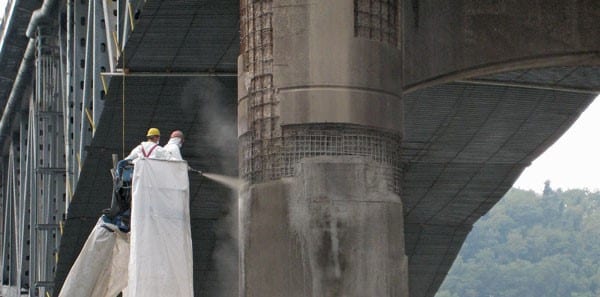Shotcrete has become a widely used method of concrete application over the past few decades, with many industries benefitting from its use. Tunnelling, ground support in mining, slope stabilisation, swimming pools, skate parks, ground excavation, and residential and commercial buildings all utilise shotcrete due to its many advantageous properties. The application of concrete through a hose at high velocity allows contractors to perform their jobs faster, more efficiently, and cheaper than using traditional cast-in-place concrete.
Despite its many benefits, there are a number of design considerations for shotcrete structures which must be followed to ensure the structure remains equally functional, operational, and safe as the samestructure made from conventional concrete. Some of these considerations involve stability, strength, serviceability, durability, fire resistance, and other design requirements. In today’s article, we’ll be taking a closer look at each of these considerations to provide a complete picture of the design considerations which must be followed for all shotcrete structuresin Australia.
Stability
The primary considerations relating to the stability of shotcrete structures include overturning, buckling, uplift (or flotation), or sliding of the structure. Overturning relates to free-standing shotcrete structures such as elevated silos; uplift relates to ground structures which are subject to hydraulic pressure such as swimming pools; and sliding relates to shotcrete structures which are subjected to a horizontal load component. It’s important to bear in mind that some structures may be subject to several stability considerations, such as retaining walls (where both overturning and sliding are critical factors).
Strength
Shotcrete can be used for a range of purposes, from a full structural support role to a superficial sealing layer or aesthetic appeal, so the intended use of the shotcrete will determine its strength requirements. Despite this, the common goal of all design methods is to achieve a load resistance that is greater than any potential imposed load actions by an appropriate margin.
Nowadays, there are two approaches to strength design which are used: analytical and empirical. The analytical approach involves weighing potential load actions and corresponding load resistance of the structural system, whereas the empirical approach involves using documentation from previous experiences to derive a satisfactory structural system. In any case, it is always recommended that where shotcrete is being used for structural purposes, a qualified and experienced engineer is employed to perform the necessary structural design.
Serviceability
This consideration can be described as the capability of a shotcrete structure to remain suitable for its intended purpose over its expected life (or design life). Serviceability is closely related to load resistance, and any shotcrete structure may have to meet specific serviceability criteria, for example crack widths and limits on deflection. Other serviceability considerations which may be applied to shotcrete structures include appearance, surface finish, water-tightness, creep deformation, and abrasion resistance.
Durability
The primary consideration relating to durability is the capability of a shotcrete structure to withstand environmental forces which are likely to occur during its expected life without the need for unwarranted maintenance. These environmental forces include the corrosion of reinforcement and chemical attack of the concrete matrix. Durability requirements for reinforcement are generally fulfilled by limiting in-service crack widths to 0.3mm and making sure the concrete matrix meets AS3600 requirements for the appropriate exposure class.
Fire Resistance
In some circumstances, requirements specified in either the Building Code of Australia or by the client may stipulate that certain applications of shotcrete are to be fire resistant over a minimum period of time. This type of requirement generally involves resistance to critical loss of strength, serviceability, or the transmission of heat and/or smoke.
Other Considerations
Depending on the application of the shotcrete structure, other criteria may need to be considered such as operation and environmental requirements which typically relate to restrictions on operational hours, the remoteness of the site, or weather extremes. Other criteria which may need to be considered include elastic modulus, abrasion resistance, and density. It should be noted that all properties of the shotcrete matrix are interdependent and certain requirements can be incompatible, such as low density with high strength, and low drying shrinkage with high cement content.
As you can see, there are many design considerations which must be taken into account when building shotcrete structures in Australia. Each of these design considerations must be followed to ensure the structure is equally functional, operational, and safe as the same structure made from conventional concrete throughout its expected life. If you have any questions or concerns regarding any of these considerations, reach out to the professionals at Evolution Shotcrete by phoning 07 5561 8885.
